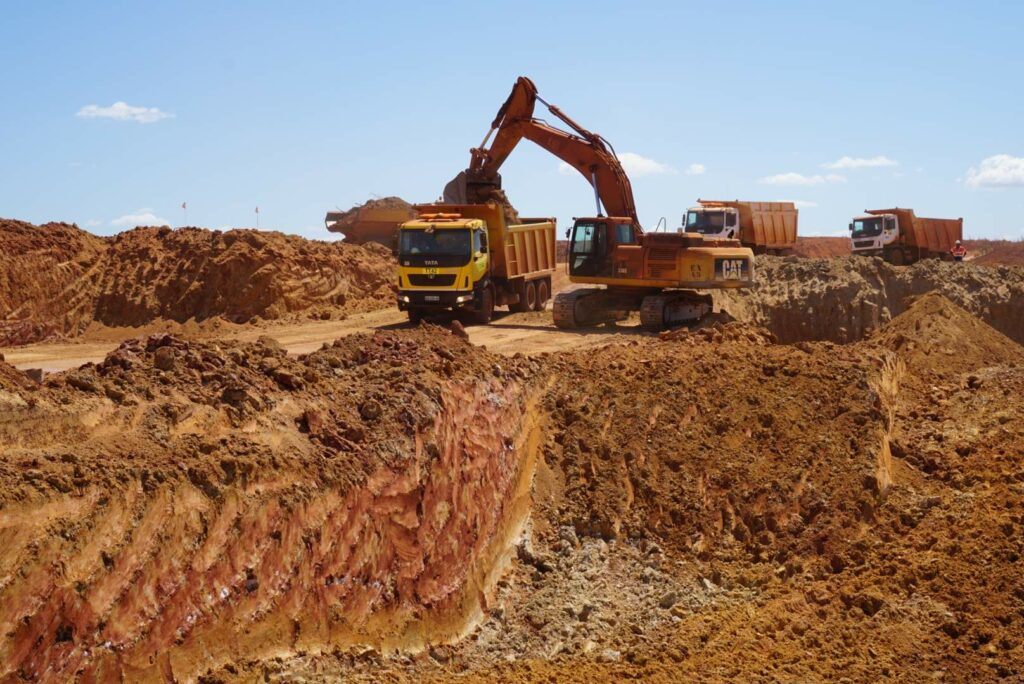
When to walk away: A practical guide to responsible disengagement
SUMMARY: Responsible disengagement means ending supplier relationships in a way that minimises harm to workers and communities, only after all efforts to prevent or fix issues have failed. It’s rarely simple: price pressure, unrealistic timelines and systemic risks often drive harm. Companies must balance red-line violations, remediation plans, and stakeholder pressure, prioritising collaboration and worker voice to avoid shifting problems rather than solving them.
Written by Salomé Wyns
It sounds simple: if harm happens, you walk away. But in practice, supplier disengagement is rarely straightforward. In many industries, limited sourcing options and low buyer leverage often make disengagement impractical. Even when alternatives exist, switching can be costly and complex, and the human cost of exit remains high. This piece explores what disengagement looks like on the ground – for companies, suppliers and the workers caught in between.
In part one of this series, we explored what responsible disengagement is, and what to do when it becomes a real option. At its core, responsible disengagement means ending a business relationship in a way that minimises harm to workers and communities, and only after all reasonable efforts to prevent or mitigate negative impacts have failed or are not feasible. It’s a last resort, guided by due diligence principles, and requires careful planning and consultation.
This time, we’re moving beyond theory to the messy realities that don’t fit neatly into policy documents. I sat down with my colleagues Luke Smitham and Jean-Baptiste Collovray to unpack what disengagement looks like when you’re in the thick of it. Though the contexts vary greatly, across sectors, whether it’s electronics, fashion or agriculture, the patterns are strikingly similar: pressure builds, harm surfaces, and companies face the hard choice of whether to stay or leave.
Why suppliers fail before disengagement even starts
“What is it about the way brands buy, negotiate and operate that makes it so hard for suppliers to stay compliant in the first place?”
Luke replied:
“Some retail companies operate on a pure price-driven model. They buy huge volumes and switch suppliers overnight if someone offers the same product for a penny less. I know of a factory that collapsed in a few weeks because a competitor undercut them by a few cents per sock. Disengagement is baked into their business model.”
His point was clear: you can’t talk about responsible disengagement if the engagement was never responsible to begin with.
Jean-Baptiste brought in his perspective from the electronics sector, where the context is different, but no less problematic.
“Purchasing practices are often the root cause of worker harm,” he explained. “Short contracting windows, unrealistic delivery timelines, and price pressure force suppliers to rely on cheap migrant labour through questionable channels. Companies only start asking questions after the harm is visible.”
Luke added that the agriculture sector is no exception. He described how some strawberry farmers in Europe are squeezed to meet supermarket price points, leading to exploitative practices like overcrowded housing, illegal salary deductions and piece-rate systems workers can’t meet, as explained in this 2023 Oxfam report.
“It’s not just about bad actors,” Luke said. “It’s about a system that relies on cutting corners.”
And when it comes to contracts? Suppliers often don’t stand a chance. Luke shared a case where a supplier signed a disengagement clause that allowed termination after a set number of social compliance violations – with the supplier footing the bill for the final shipment,
“They signed it without negotiation,” he said. “They needed the work. But when violations were found, they had two months to fix serious issues or lose the client. That’s not a partnership – that’s a power imbalance.”
TAKEAWAY: Disengagement doesn’t start with a violation. It starts with how brands buy. If purchasing practices are designed to squeeze suppliers, then disengagement isn’t a last resort, it’s the inevitable outcome of an unequal relationship.

When is disengagement justified?
Suppliers are often set up to fail. But that doesn’t mean brands should accept everything. Sometimes, disengagement might be necessary, but the question is when?
Jean-Baptiste: “Disengagement is rarely the right option. Most issues can be managed through real collaborative engagement, accountability and time.”
But what does “time” mean in practice? Six months, a year or more?
Luke pointed to the six-month recommendation in the OECD’s Minerals Due Diligence Guidance, which is a useful benchmark to determine whether measurable improvement has occurred. However, Luke clarified that, in his view, there are certain red-line violations that warrant immediate and non-negotiable disengagement. These include child or forced labour, or when a site has been sanctioned by a competent authority. In those cases, disengagement is immediate and non-negotiable.
Jean-Baptiste agreed, but added a nuance:
“You need a clear escalation process. Identify the issue, agree on corrective/improvement actions and a realistic timeline with the supplier, and set milestones for completion. That timeline isn’t dictated by a guideline – it’s based on what’s realistically achievable on the ground.”
Jean Baptiste shared a case where migrant workers, working at an electronics supplier in Taiwan, had paid high recruitment fees to secure their job. The supplier committed to repaying those fees and investigating and aligning labour agents’ recruitment practices over a one-year remediation plan. It wasn’t going to be solved in three or six months – the numbers were just too high. But because the company had internal alignment, regular progress checks and a clear escalation path to senior leadership in case things stalled, they stayed the course. And it worked.
TAKEAWAY: Disengagement should never be the first move. It’s only justified when harm is severe, trust is broken and all reasonable efforts to fix the issue have failed.

Stakeholder pressure and the demand for clean breaks
No matter how thoughtful your process is, once headlines start raising concerns among investors and stakeholders, the story often boils down to one thing: in or out?
Headlines that spark alarm among stakeholders often create pressure for black-and-white answers, but the reality is messy. What happens when you’re working on remediation and pressure mounts for a clean break?
Luke responded:
“Legal teams often tell us straight: ’We need audit reports. If we get caught, that’s our protection.’ It’s not about solving the issue – it’s about having paperwork to prove you didn’t have one.”
Audit reports are often used as a corporate shield – not because they reflect reality, but because they satisfy the need for simple answers. And that’s the problem. When it comes to risk, senior leadership, media, and consumers often want clarity, but the reality isn’t always clear-cut.
Jean-Baptiste offered a counterpoint – citing a case in Malaysia where forced labour was discovered at a supplier’s facility. Despite media scrutiny, the company upheld its commitment to responsibility. Disengaging from the supplier would have caused serious harm to the affected workers, making the company’s response crucial to their welfare.
“We had weekly calls with the supplier’s Regional Managing Director. We worked through the remediation step by step, engaging workers, calculating fees, investigating allegations and collaboratively developing a remediation plan. It wasn’t fast, but it was real and effective.”
They stayed engaged, even under pressure. That kind of transparency takes courage and coordination. The company acknowledged the issue should have been identified, while noting that responsible sourcing processes are not fool proof. What mattered was to investigate seriously and implement proper remediation once the problem came to light.
TAKEAWAY: Disengagement isn’t just a supply chain decision – it’s a communications challenge. The more complex the situation, the more important it is to be transparent. Because if you don’t tell the story, someone else might, and they may not get it right.
Collective action: shared problems, shared solutions
When supplier disengagement is driven by systemic issues, who’s responsible for fixing them?
No single company can fix systemic or even endemic issues like discrimination along racial, ethnic or gender lines. These problems are bigger than any one buyer. And yet, collaboration is still the exception, not the norm.
On this topic, Jean-Baptiste said:
“Industry schemes like the Responsible Business Alliance (RBA) in the electronics sector play a pivotal role. They allow companies to collaborate while preserving trade secrets and in compliance with antitrust laws, share findings and avoid duplicating efforts to mitigate and remediate impacts.”
But that’s easier said than done. In sectors like fashion, the fear of antitrust violations is so strong it paralyses progress. Luke said:
“I’ve seen first-hand fashion companies refusing to collaborate – too scared of competition concerns, too siloed to share.”
Jean-Baptiste agreed, noting that electronics and mining are ahead of the curve in that domain. They have intermediaries, knowledge holders and clearer channels for cooperation.
Still, the fear persists. Companies worry that even talking about shared suppliers could land them in hot water. That’s why industry schemes matter: they create safe spaces for collaboration, and they can drive real progress when its members are committed.
Industry collaboration is essential, but it’s not enough. Companies must actively engage with external stakeholders. This means consulting NGOs to inform risk assessments suppliers; joining multi-stakeholder platforms or engaging governments directly to push for enforcement of labour laws in regions with systemic issues; and involving unions or worker representatives in grievance and remediation processes.
TAKEAWAY: Responsible disengagement isn’t just about one company; it’s about the system. Industry collaboration helps. But real progress requires broader coalitions: companies, NGOs, governments, and most importantly, workers themselves.

Worker voice and remediation: The importance of listening
By this point in the conversation, we’d covered purchasing practices, red lines, media pressure and collaboration. But the most important perspective was still missing – the people at the centre of it all.
What do workers actually need?
Jean-Baptiste recounted a case in Malaysia where migrant workers expressed needs beyond wages — such as the ability to visit family, access leave and receive equal treatment to local workers. Luke shared a story from Mumbai, where workers valued employer ID cards more than pay increases, because those cards helped protect them from police harassment.
These stories remind us that what workers want isn’t always what we assume. And while these insights aren’t necessarily linked to disengagement, they underscore the importance of listening – especially when harm has occurred. According to the UN Guiding Principles on Business & Human Rights and the OECD Due Diligence Guidelines for Responsible Business Conduct, companies that cause or contribute to harm have a responsibility to provide or cooperate in remediation. Remedy is often framed as a means of restoring workers to the position they would have been in had the harm not occurred – whether through compensation, reinstatement, guarantees of non-recurrence or other meaningful remedies.
But remediation only works when suppliers trust that transparency won’t be punished. As Jean-Baptiste put it:
“I’ve previously been involved in cases where suppliers came forward with issues. And because we didn’t penalise them for it, they trusted us. It didn’t affect their rating, their pricing or their business allocation. That’s when you build strong, trusted partnerships.”
Luke agreed. Building that kind of trust takes time, and it’s fragile. If suppliers feel threatened, they’ll hide the truth. But if they know transparency won’t be punished, they’ll engage and that’s when remediation becomes possible.
Once disengagement happens however, leverage is reduced: access to sites, workers, and information ends, making remediation more difficult, however it is not impossible, a recent study by the Hong Seng Knitting in Thailand, showed how Nike agreed to compensate workers for previously unpaid wages even after exiting the supplier (though the remediation plan faced criticism for not fully addressing issues such as interest on owed wages and protections for worker representatives).
TAKEAWAY: If harm has occurred, remediation isn’t optional. Once you’ve walked away, your leverage, and your chance to make things right, diminishes sharply.
Conclusion: The system is flawed, but that doesn’t mean we stop trying
As we wrapped up our conversation, I asked Luke and Jean-Baptiste what they’d taken away from years of advising companies on responsible sourcing. Luke said:
“The system doesn’t incentivise responsible engagement. It rewards speed, cost-cutting, and plausible deniability. So, disengagement often feels like the easiest option, and sometimes, it is.”
Jean-Baptiste agreed:
“As a customer, you can’t fix everything alone without suppliers’ buy-in and collaboration. But you can be transparent. You can collaborate. You can listen to workers and you can make sure that when you disengage, it’s not just about protecting your brand, it’s about protecting people.”
We talked about red lines: the worst forms of child and forced labour, sanctioned sites and repeated dishonesty. But we also talked about the grey areas. The factories where workers voluntarily work 80 hours a week because they need the money. The suppliers who want to improve but don’t know how. The companies that want to do the right thing but are afraid of the headlines.
And we talked about the role of procurement – not just as buyers, but as stewards of impact.
If you’re pushing prices down, you’re pushing risk up and if you’re disengaging without remediation, you’re not solving the problem – you’re just moving it.
Even after disengagement, responsibility doesn’t always end. In some cases, companies have been asked to remediate harms that occurred during the relationship, long after the contract was closed. It’s a reminder that disengagement may end the business, but it doesn’t always end the accountability.
TAKEAWAY: Disengagement is a last resort. And if you’re doing it responsibly, it should feel uncomfortable, because the easy way out rarely protects the people who need it most.
[1] See Step 3(D) of Annex I, OECD Due Diligence Guidance for Responsible Supply Chains of Minerals from Conflict-Affected and High-Risk Areas. The six-month benchmark applies to risks of direct or indirect support to public or private security forces, including criminal networks, and recommends suspension or discontinuation of engagement if no measurable improvement occurs.

